Climate-Smart Gardening
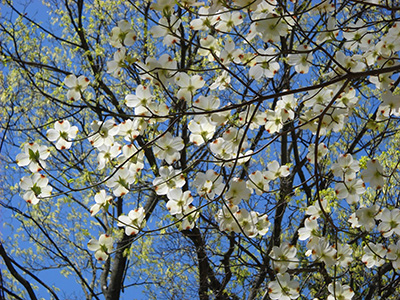
Flowering dogwood is a native tree that's ideal for planting near homes for shade.
As you’ve likely noticed just from checking the weather, Florida’s climate is changing. We’re facing higher temperatures, stronger storms, and water depletion. Fortunately, there are actions you can take to help your landscape adapt to these changes and mitigate some climate change impacts. It may not seem like you alone are able to help the situation, but many gardeners working together for a better future will make a difference.
Plant trees and natives
Trees play an important role in your landscape by saving energy, capturing and filtering stormwater, improving air quality, and supporting healthy soils. By planting small or medium trees near your home, you can keep your house cooler in the summer and warmer in the winter. This lowers demand on the energy grid and saves you money on electric bills. Having a high diversity of trees in the landscape also increases resiliency in the face of future pests and diseases while moderating the urban heat island effect (meaning that urban areas are hotter than natural lands due to pavement, buildings, and other materials that retain heat). Additionally, planting natives in the right places will help conserve water, fertilizer, and pesticides. Native plants are already adapted to Florida’s soils, climate, and pest challenges, so they require fewer inputs.
Compost
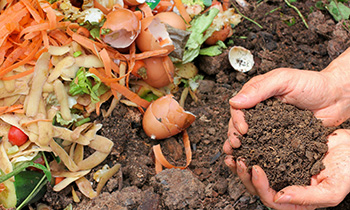
Instead of sending food scraps to decompose in a landfill, you can convert them into a valuable soil amendment at home. In addition to food scraps, you can also add farm animal manure, grass clippings, fallen leaves, twigs, sawdust, shredded newspaper and cardboard, paper towels, tea bags, and coffee grounds to your compost system. Using compost to bolster your soil health will reduce your reliance on outside sources and make your garden that much closer to being self-sustaining.
Use an integrated pest management program
Many of Florida’s garden pests are most active when it’s hot and humid. Unfortunately, those conditions are becoming increasingly prevalent throughout the year due to climate change. The best way to handle this challenge is to use an integrated pest management (IPM) plan. With this method, you scout for and accurately identify the pest first and then take the most effective measures to address the challenge. Most pest insects become a problem in landscapes that are out of balance, where pesticide use or plant selection has limited the numbers of beneficial predatory insects. Before you reach for the weed killer, consider cultural changes you could make and explore different biological options. If pesticide use is necessary, make sure you carefully research the product first and follow the label. Many pesticides have unintended consequences like ecosystem disruption or killing nontarget organisms.
Manage stormwater
More storms mean more stormwater, which is the water that flows into storm drains during heavy rains. This water is not treated, so it picks up grass clippings, fertilizer, oil, and other pollutants and deposits them directly into the environment. You can prevent pollutants from entering stormwater by applying fertilizers and pesticides with care and sweeping up any debris from hard surfaces. Reducing the amount of stormwater that reaches storm drains solves the problem at the root. You can do this by not installing impervious surfaces in your landscape, using rain barrels to collect water, and creating a rain garden to collect and filter stormwater.
Protect soil
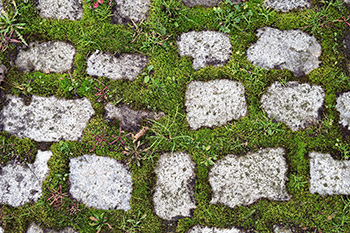
Installing pavers is a great way to reduce soil erosion in high traffic areas and is an opportunity to repurpose materials.
Protecting your soil involves both keeping it healthy and preventing it from being eroded away. A simple way to boost soil health and increase organic matter is to incorporate soil amendments such as compost, manure, or worm castings. Soil is most easily eroded when it’s bare, so plant cover crops in your garden when you aren’t actively growing anything and plant groundcovers in your landscape. Be sure to mulch your landscape beds with appropriate hardwood mulches or pine straw to prevent soil erosion, moderate soil temperatures, and retain soil moisture. The mulch will also add valuable organic matter to the soil as it breaks down. Put down permeable pavers to serve as paths or driveways since they will distribute the weight of traffic while still allowing water to filter through.
Use reclaimed, recycled, or local hardscaping
Recycling materials instead of purchasing them new both reduces waste and lowers the energy used for manufacturing. Some examples include using reclaimed or repurposed metal for fencing, purchasing materials made from recycled plastic, and reusing old bricks, concrete, or aggregate. Make sure any wood you purchase for edible garden beds is from a sustainable source and not chemically treated.
Irrigate efficiently
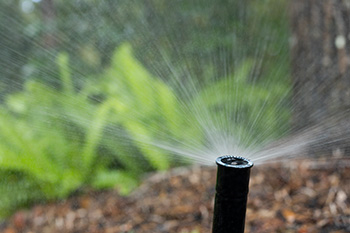
Florida’s water resources are fragile as demand is starting to overshadow supply. Responsible irrigation can help lower demand, and using an efficient automated irrigation system is one way to help. You’ll want the irrigation system to be properly calibrated, with the various zones of your yard being watered according to the plants’ needs. For example, ornamental areas don’t need the same amount of water as turfgrass. Also, established trees and shrubs don’t need supplemental irrigation. Be sure to regularly check that your rain sensors or soil moisture sensors are operating correctly to avoid overwatering. Consider creating non-irrigated landscape beds made up of mulched, drought-tolerant natives to further save water.
Use manual or electric tools
Manual tools are the most sustainable way to work in the garden. They are less expensive and can give you a good workout! Gasoline-powered lawn equipment produces emissions that contribute to the climate crisis. When a hand tool isn’t sufficient, explore electric options to limit air quality impacts. Electric tools also have the added benefits of being quieter and avoiding the issue of polluting your landscape with spilled fuel. There are solar-powered options if you’d rather avoid using the grid.
Grow your food
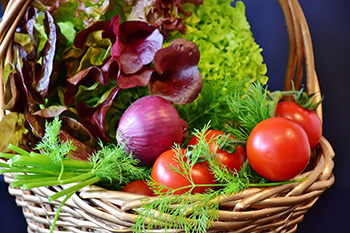
Agriculture is resource intensive, from growing, to transporting, to processing. The more local your food source, the more sustainable it is. Of course, the most local you can get is your backyard! Even with the rising temperatures, Florida’s climate is still capable of producing fruits and vegetables almost year-round. Growing your own food can be rewarding, less expensive, and a way for you to try different varieties of produce that may not be available at your grocery store.
At its root, climate-smart gardening recognizes the link between our landscapes, our community, and our world. It means keeping the health of the earth that sustains us in mind as we plant. Sustainably gardening and managing your landscape is best for both for the longevity of your garden and your family. If you have any questions as you implement these practices, please reach out to the experts at your county Extension office.
Also on Gardening Solutions
- Composting for the Home Gardener
- Garden Tools
- Native Plants
- Natural Pest and Disease Management
- Planting Trees for Energy Savings
- Saving Water Using Your Irrigation System
- Stormwater Runoff
- Sustainable Home Food Production
- Working in Your Florida Soil

